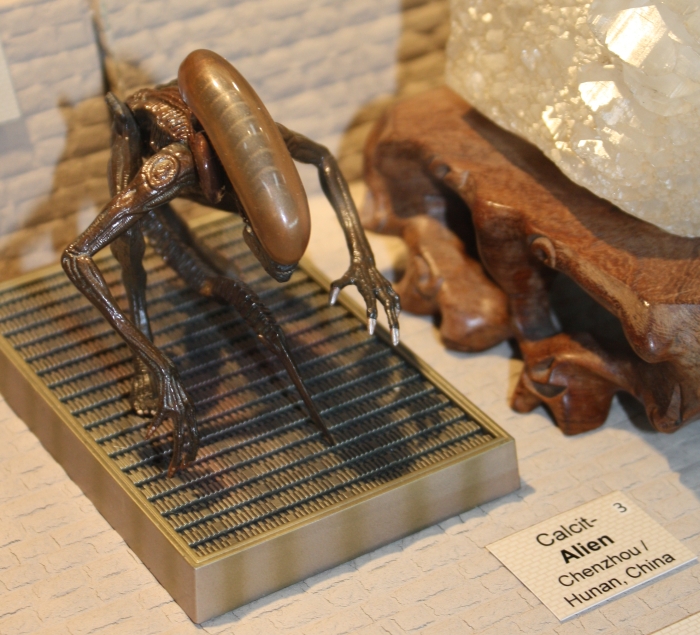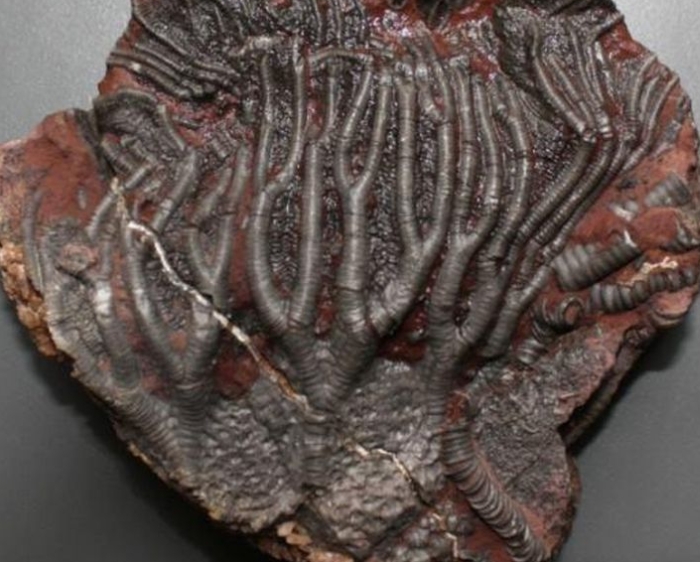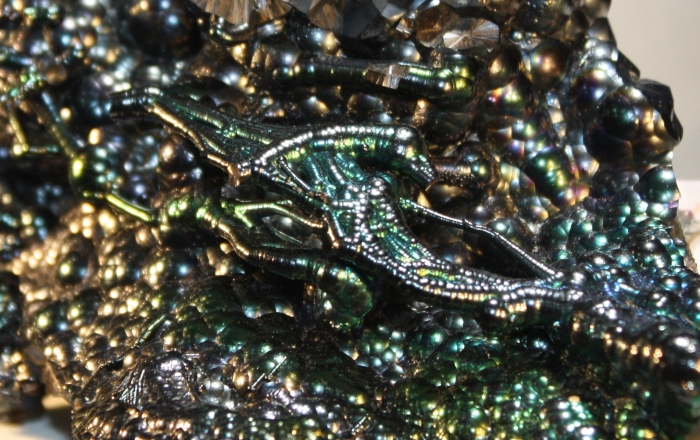
When the movie “Alien” was released in 1979, it quickly terrified audiences worldwide. Its unexpected mix of classic horror and science-fiction elements got at first mixed reviews, however, over the years Alien had come to be regarded as one of the best horror-science-fiction films ever made.“Alien“ screenwriters Dan O’Bannon and Ronald Shusett based parts of their script on various older science-fiction movies and tales, like „At the Mountains of Madness“, a science-fiction/horror story published by American author H.P. Lovecraft in 1936. In the story, a team of scientists is hunted and killed by ancient creatures resembling fossil animals. Lovecraft apparently based this part of his story on the real discovery of fossil archaeocyathids in Antarctica made in 1920 by geologist William Thomas Gordon. Archaeocyathids are an extinct group of sponge-like creatures believed to be among the oldest animals ever to live on Earth.
Hans Rudolf Giger, Swiss surrealist artist, architect and industrial designer, was hired to create all forms of the Alien featuring in the film, from the egg to the adult. Giger created various versions of the alien life-cycle, like a gigantic egg nest, replaced in the final movie with an egg silo inside a derelict spaceship. The eggs were directly inspired by female reproductive organs, slightly modified to avoid censorship. The facehugger, a parasite attaching to the head of its victim to incubate an embryo, is based on the bones and muscles of a human hand and male genitalia, its springlike tail was added to emphasize its quick movements. The parasitic life-form was an idea of Ronald Shusett. Shusett suggested that one of the crew members be implanted with an alien parasite to explain how the alien life-form, discovered at first as an egg in a derelict alien spaceship, came on board of the mining spacecraft Nostromo. The parasite bursts from the chest of its victim and soon the crew has to deal with the fast-growing life-form hiding in the air vents of the spaceship. The design of the chestburster and the full-grown xenomorph (alien-shaped thing) is based on Giger’s „Necronom IV„, an artwork created in 1976. The surrealist drawing shows a female figure composed of different parts of insects, parts of vertebrates and even fossils. Giger used the fossils of 300 million-year-old crinoids, commonly called sea lilies, on display in the Aathal dinosaur museum as a source of inspiration.

The earliest known crinoids date back to the Ordovician (some 450 million years ago). Their remains are very common in the fossil record, forming rocks like limestone or dolostone. The skin of echinoderms, including sea cucumbers, sea urchins, crinoids, brittle stars and starfish, is covered with tiny ossicles made of calcium carbonate forming a protective, yet flexible, outer shell. In a similar way, Giger’s Alien is protected by a silicon-based external skeleton. This outer shell is also very useful to contain the acid blood of the creature. Concept artist Ron Cobb added the acid blood as a defense mechanism, making it impossible to kill the Alien without damage to the crew or the spaceship.

The life-cycle of the Alien from egg to queen (as introduced in the sequel) resembles the life-cycle of real animals, the Ichneumonidae. The Ichneumonidae is a wasp family preying on insects. An adult female wasp will lay her eggs within a host through a process known as ovipositing. The eggs will grow and develop into larvae, which will feed on their host from the inside-out. Somewhere along the way the host will actually die or be kept in a state very near death until, finally, the little wasp spins a cocoon around and-or within its host, eventually emerging as an adult wasp. A horrified Charles Darwin famously mentions in a letter sent in 1860 to his friend, the botanist Asa Gray, the parasitoid wasp:
» I cannot persuade myself that a beneficent and omnipotent God would have designedly created the Ichneumonidae with the express intention of their feeding within the living bodies of caterpillars… «
In their natural environment, these wasps play important roles in regulating the populations of their insect hosts, and have been used in agricultural crops to control caterpillar pests. Dolichogenidae xenomorph is a parasitoid wasp species named in 2018 after the xenomorph, as „the wasp is also black and shiny like the Alien.“
The graphic representation of the „perfect organism“ earned the visual effects team of „Alien“ a well-deserved Academy Award.